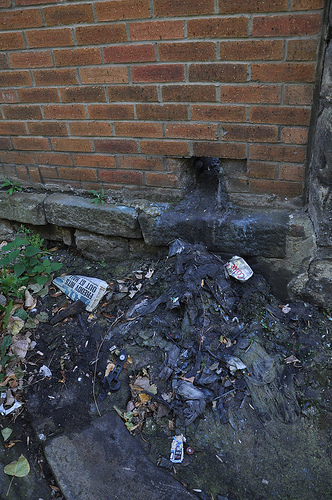aarhus
Table of Contents
1 Psychogeophysics Aarhus (working title)

Psychogeography could set for itself the study of the precise laws and specific effects of the geographical environment, consciously organized or not, on the emotions and behavior of individuals.
[Introduction to a Critique of Urban Geography. Guy-Ernest Debord]
Psychogeophysics Aarhus proposes discussion and intervention (walking) in the spectral city of Aarhus, and within the novel interdisciplinary frame of psychogeophysics, colliding and revitalising psychogeographics with earth science measurements and study; a practical investigation of urban geophysical archaeology and spectral ecologies.
Psychogeophysics as a novel discipline can be defined as crossing the wave and code distinction, encompassing the disciplines of psychogeographics, data forensics and geophysical archaeology. It presents an interdisciplinary and highly speculative methodology investigating wider, complex signal ecologies through walks, discussions, working groups, measurement and quasi-scientific practice. The extension of psychogeographics into geophysics implies a collision between fiction (as software/code) and materiality, with geophysics defined as the quantitative observation of the earth's physical properties, with an emphasis on the magnetic field. Geophysics equally encompasses archaeological geophysics, with measurement of such properties allowing for the mapping of previous traces; an extension into detection and forensics.
Psychogeophysics Aarhus is situated within the context of a mobile research laboratory devoted to the use of free software and open hardware within the field of psychogeophysics. Workshops and working groups have been conducted within this frame in Newcastle (The Courier's Tragedy) and in Berlin (Topology of a Future City as part of Transmediale10).
2 schedule
2.1 1] Introduction to general concepts and techniques by way of simple
demonstrations and experiments (steganography, radio, data forensics).
sign/signal/execution
- what these demonstrations are?
– steganography – detektor pickup – data forensics (kismet, wireshark and tcpdump
2.2 2] Psychogeophysical walk(s) in the city of Aarhus using key
techniques (following a signal, extensive measurement, derive, forensics and hidden networks).
- what these techniques are?
– scrying (measurement (2x scry measurements, GSR, detektor), steganographised landscape, sites of execution
– signal following, signal escape
2.3 3] Analysis, interpretation and visualisation of walk results
using free software, and fiction.
- scrying
set parametric unset key set style data line set surface unset contour set dgrid3d 30,30,10 splot "/root/gpstest" # for line style plot (a la plot3) unset view map set ticslevel 0 set surface unset contour unset pm3d unset dgrid3d splot "/root/gpstest" using 1:2:3 with lines
- also note: for orientation purposes scrying logs can be aligned with
Google Earth data/visualisation using either:
http://www.gpsvisualizer.com/map_input?form=google
[comma delimit and add to the top: latitude,longitude,elevation ]
then colourize by elevation
2.4 4] Short discussion of future artistic directions.
3 to fix up/work on for workshop
3.1 presentation notes
3.2 rehearse networking stuff:
- network recording:
for iwl3945// for ALFA no modprobe and use wlan1.
modprobe iwl3945 iw dev wlan0 interface add mon0 type monitor ifconfig mon0 up
-
kismet
kismet -c wlan0
-
tcpdump:
tcpdump -i mon0 -s 0 (-w for file)
-
kismet
- tcpreplay
airdecap-ng Kismet-Sep-25-2009-12.pcapdump tcpreplay -t -i lo Kismet-Sep-25-2009-12.pcapdump-dec driftnet -i lo
also see:
tcpflow -i lo
- wardriving/gpsd
gpsd -N -n -D 3 /dev/ttyUSB0
garmin is set to NMEA 4800
kismet -c wlan0 -g 127.0.0.1:2947
and then later:
giskismet -x Kismet-Apr-19-2010-6.netxml -q "select * from wireless" -o ex2.kml
upload to odin.bek.no and use in google maps
- problems/questions:
- on first attempt all locations were identical?
- can also try: airodump-ng -w cap –gpsd mon0 or gpsmap
with new airodump in /usr/local/sbin:
airmon-ng start wlan0 // starts mon0 interface /usr/local/sbin/airodump-ng -w cap -g mon0
untested:
gpsmap -S 6 -r -o map1.jpg -e cap-02.kismet.netxml
- also to download from garmin gps
gpsbabel -t -i garmin -f /dev/ttyUSB0 -o gpx -F gpsfile.gpx
- problems/questions:
3.3 GSR and scry
implemented on scrying so we have gpsdata,gpsdata,rssi,gsr (TAB seperated)
-
how do we plot double data source?
splot "gpstest" index 0 using ($1):($2):($3) w lines , "gpstest" index 0 using ($1):($2):($4) w lines
3.4 how to refine signal following?
- on mini-scry
new code: file:~/xxxxx_2/xxxxx/trunk/mini_skry/main.c.newfollower
- on laptop
tcpdump:
tcpdump -i mon0 -s 0 | grep dB | sed -n "s/.*00a0) -\([0-9]*\).*/\1/p"
and now in script with beep (check alsamixer -V all) to use:
tcpdump -i mon0 -s 0 | grep dB | ./beeper.sh
higher frequency is higher signal strength
- beeper.sh
#!/bin/bash while read lin do llll=`echo "$lin" | sed -n 's/.*00a0) -\([0-9]*\).*/\1/p'` x=$((llll * 10)) beep -f $x echo $llll done
but how to go through frequencies:
./chanhop.sh
4 notes
4.1 sites of execution
4.2 other potential activities:
- Burroughs walks and other Newcastle(which were?)
- logic gates in the environment (hedges, bottle, shoes)
- logic gate walk programmed
- environmental steganography
- following a signal
- execution of a landscape
- paranoia extension
- definition, measurement and logging of a 1 cubic metre space
- city as antenna array // teufelsberg
5 to pack
detektor + usb cable, scrying+antennas+batteries+serial/USB, network card + cable+antenna + cantenna, mini-scry all + batteries, GSR, arduino, wire, multimeter, tools and basic electronics, camera and charger, consumer GPS, 2xGPS antennas
Date: 2010-04-20 17:30:48 BST
HTML generated by org-mode 6.31trans in emacs 23